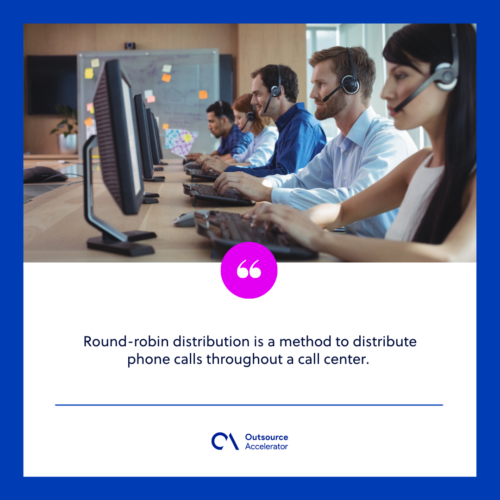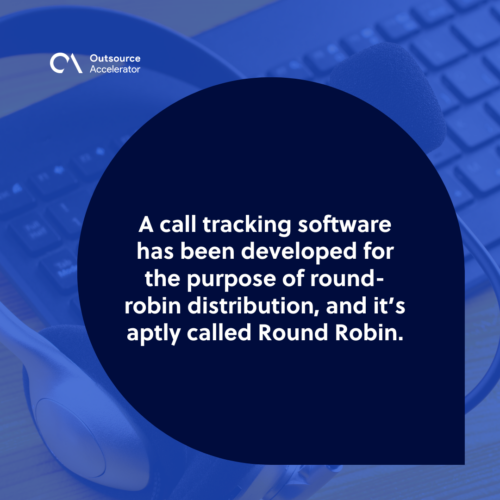Round-robin distribution
Definition
What is round-robin distribution?
Round-robin distribution is a method to distribute phone calls throughout a call center. Following the individual agent who received the most recent incoming call, the next agent on the list is chosen.
Supervisors use a round-robin distribution to maintain live chats in the call center during working hours. This way, agents will not be overwhelmed by the calls or inquiries and provide appropriate solutions.

What is round-robin load balancing?
In a similar term, round-robin load balancing distributes client requests among several servers. Each server receives a client request one at a time.
Once all the agents have had their calls, the load balancer is instructed to return to the top of the list, and the process is repeated.
Round-robin is the most used load balancing method since it is simple to construct and comprehend. Client requests are directed to access servers using this mechanism since round-robin load balancing works best.
Software for round-robin distribution
A call tracking software has been developed for the purpose of round-robin distribution, and it’s aptly called Round Robin.
The software is used to distribute incoming calls among a group of numbers. When a call comes in, it is routed to the available agent or the best agent for the call to answer.

How marketers benefit from round-robin distribution
Whether it is for customer service, sales, or marketing, the Round Robin software can be used to route the call to the best agent for the task, and manage a higher volume of calls.
Before going on to the next number in the group, a round-robin can be set to ring a certain number of times. As a result, each customer’s call is answered on time.
The management working for sales can also take advantage of the Round Robin tool to set their best sales agents to receive a larger amount of calls and provide the best customer service.







 Independent
Independent




